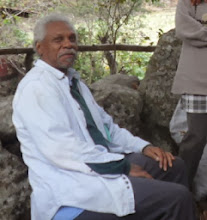Quest for the Soul: Is there Life after Life?
Virtually everyone has an opinion about what happens when we die. Hinduism and Buddhism teach that the soul goes through a series of incarnations and reincarnations so that when the body dies, the soul eventually associates with a new body, a process called “reincarnation”. In Christianity, this process is called “resurrection” although Christians are conditioned to believe that the resurrection described in the New Testament is not the same as the reincarnation of Eastern Religion. Some believe that we die and go to heaven or hell. Others have other beliefs based on their religion. Still others believe that when we die, we have experienced everything there is to experience, so there is no more. Who, if anyone is correct?
One major problem with the concept of reincarnation is, “What is reincarnated?” The classic answer to that question is, “The soul”, but Western science does not have a definition for the soul outside of religion, and Western religions only have a vague definition for the soul. Perhaps most people would agree that the soul involves consciousness, but how, and what else, if anything is involved? Psychology, which is the “study of the soul,” is a discipline without a subject. Psychologists do not have a definition for the soul, and most psychologists do not believe in the soul outside of their religion. In fact, many terms classically associated with psychology, terms like “consciousness”, “mind” and “volition” are generally dismissed by psychologists, in part to gain respectability from other disciplines in science and in part because the terms are abstract and without definition. Their determination to dismiss the existence of the mind is among their most classic concerns because neuroscience and biology in general dismiss the existence of the mind apart from the brain. Thus, the generally accepted notion in neuroscience and throughout biology is that the mind dies when the brain and body die.
Perhaps the central question to determine whether there is life after death and the survival of the soul is to determine if the soul even exists. There is considerable evidence to suggest it does, but the evidence fails to address some important concerns central to the validity of the soul. In the 1930s, Dr. Harold Saxton Burr (1889-1973), a Yale professor of Anatomy, observed evidence for the existence of an abstract force field associated with all living things, something he called the “L-Field”. Earlier, in the late 1920s, Dr. William McDougall (1871-1938), a psychologist, found similar evidence while pursuing evidence as to whether learned information and learned behavior is passed on by the genes. McDougall’s and Burr’s work demonstrate that and abstract something exists before and after life. Other than to recognize that this abstract something is a force field similar to electricity, magnetism and gravity, little is known about it. It appears to be electromagnetic in nature, but it also appears to be a number of small fields within a larger field.
The phenomenon of multiple personalities, once confused with schizophrenia, is a situation where two or more personalities co-exist in one body. Schizophrenia is actually a loss of contact with reality. Such individuals are generally scattered and incoherent but not multiples. Multiple personalities are quite normal, or they can vary from some being normal and others being neurotic, psychotic, even schizophrenic. In other words, each personality in MPD situations has his or her own psychological states and problems just as they have their own physiology, heartbeat, etc. Although labeled as “Multiple Personality ‘Dysfunction’” (MPD), there is little evidence that multiple situations are a ‘dysfunction’ or anything other than what it appears to be, i.e., more than one personality within the same body. In fact, the different personalities can have different habits, different handwriting, different heart rates, different physiology and more, all within the same body. Everything suggests that they actually are different personalities, and indeed different people (or souls, whatever that may mean) housed within the same body. Today, psychologists assume that MPD arises from childhood trauma, but this conclusion is questionable. If psychologists were to review the MPD data with an open mind, perhaps they’d be more likely to recognize its bearing on the question of life after life since most of the personalities in MPD situations are those of “dead” people!
A number of studies have been pursued to demonstrate that reincarnation and life after life exist. Perhaps they are valid, but the MPD phenomenon certainly needs an open-minded review to determine if they actually are different souls within the same individual. Since we do not know what a soul is, or even if it is, perhaps the best way to approach the issue is to return to Burr’s work and determine if the separate personalities in multiple situations can be detected as multiple force fields. These questions have not been asked and the relevant research has not been pursued. Perhaps such a pursuit would add immeasurably to our understanding of life and living, both now and in the hereafter.





